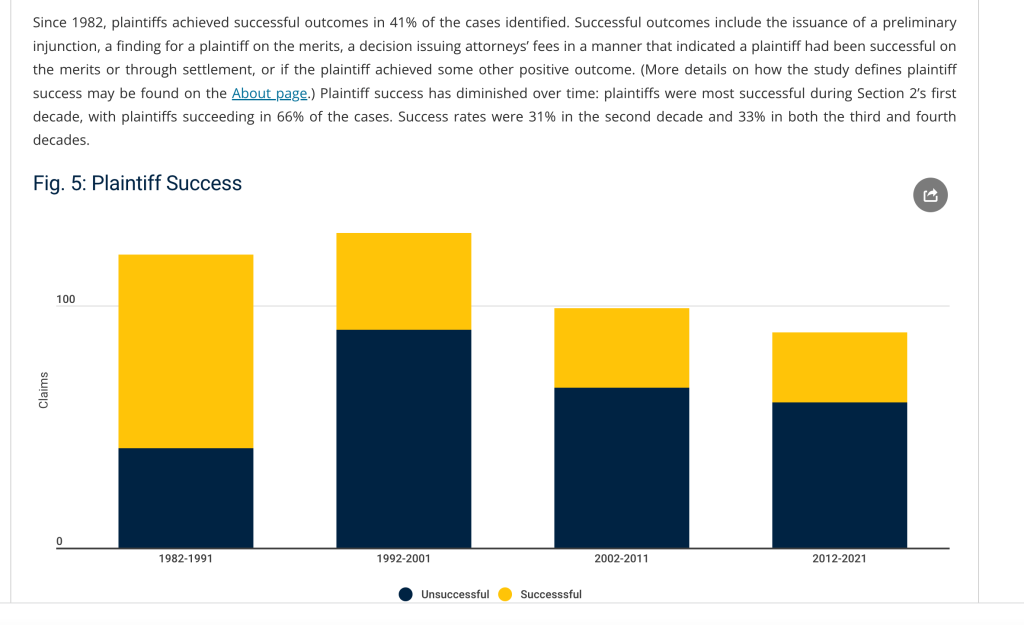The study by Ellen Katz and her students at the University of Michigan on Section 2 cases played an important role in the majority and dissenting opinions in the Supreme Court’s Shelby County v. Holder case on the power of Section 2 versus Section 5 to protect minority voting rights. Now Professor Katz sends along the following updated analysis from her database:
ELB readers may be interested in a report and website my students and I have released that examines how Section 2 decisions have changed over the last four decades. Of note is the substantial decline in the number of Section 2 cases decided and diminished success for the plaintiffs who bring them. The project supplements our earlier research documenting Section 2 decisions through 2005.
A few findings to flag. As Brnovich and now Merrill v. Milligan signal that Section 2 is likely to occupy, at best, a diminished role in future electoral disputes, Section 2’s reach had already declined significantly prior to either dispute. Our report documents a steep drop in the number of Section 2 decisions involving vote dilution. So too, while plaintiffs bringing dilution claims found notable success in the first decade after Congress amended Section 2 in 1982, they have seen a steady decline in success ever since. Meanwhile, plaintiffs bringing Section 2 non-dilution claims—i.e., alternatively labelled “vote denial” or “time, place and manner” restrictions—have seen less success overall, and, as with dilution claims, a steady decline in success over time.

Other trends: Black plaintiffs participated in 71% of Section 2 cases—the most of any plaintiff group. American Indian plaintiffs have found the most success, achieving positive outcomes in 56% of cases they brought. Section 2 defendants have more often been local governments or officials than state governments or officials, though the proportion of state defendants has increased in recent decades.
Since Shelby County, more Section 2 cases have been decided in jurisdictions previously subject to Section 5 than in places that were not subject to the preclearance requirement. This uptick is consistent with the idea that at least some plaintiffs are looking to Section 2 for remedies once provided by Section 5. Still, plaintiffs bringing these Section 2 cases succeeded less often than they did previously. This is not wholly surprising given that Section 2 was not structured to provide the quick and calibrated relief Section 5 offered, and itself has been limited in ways that restrict its application yet further.